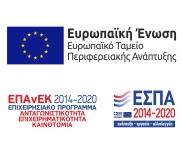
Surgery for complications of trans-catheter closure of atrial septal defects
Surgery for complications of trans-catheter closure of atrial septal defects: a multi-institutional study from the European Congenital Heart Surgeons Association
George E. Sarrisa,*, George Kirvassilisa, Prodromos Zavaropoulosa, Emre Bellib, Hakan Berggrenc, Thierry Carreld, Juan V. Comase, Antonio F. Cornof, Willem Daeneng, Duccio Di Carloh, Tjark Ebelsi, Jose Fragataj, Leslie Hamiltonk, Viktor Hraskal, Jeffrey Jacobsm, Stojan Lazarovn, Constantine Mavroudiso, Dominique Metrasp, Jean Rubayq, Christian Schreiberr, Giovanni Stellins
a Mitera Children’s and Hygeia Hospitals, Marousi, Athens, Greece
b Marie Lannelongue Hospital, Le Plessis-Robinson, France
c Children’s Heart Center, The Queen Silvia Children’s Hospital Goteborg, Goteborg, Sweden
d Clinic for Cardiovascular Surgery, Swiss Cardiovascular Center, University Hospital, Bern, Switzerland
e Pediatric Heart Institute, Hospital Universitario Madrid, Madrid, Spain
f Alder Hey Royal Children Hospital, Liverpool, United Kingdom
g KUL University, Leuven, Belgium
h Dipartimento Medico Chirurgico di Cardiologia Pediatrica, Rome, Italy
i University Medical Center, Groningen, The Netherlands
j Hospital de Santa Marta, Lisboa, Portugal
k Freeman Hospital, Newcastle, United Kingdom
l German Pediatric Heart Center, Asklepios Clinic, Sankt Augustin, Germany
m The Congenital Heart Institute of Florida, USA
n National Heart Hospital, Sofia, Bulgaria
o The Children’s Memorial Hospital, Chicago, Illinois, USA
p Hospital de la Timone, Marseille, France
q Clinique Universitaires Saint-Luc, Brussels, Belgium
r German Heart Center, Clinic at the Technical University, Munich, Germany
s University of Padova Medical School, Padova, Italy
Received 7 October 2009; received in revised form 9 December 2009; accepted 11 December 2009.
* Corresponding author. Address: Department of Pediatric and Congenital Heart Surgery, Mitera Children’s and Hygeia Hospitals, Athens Heart Surgery Institute, #6 Erythrou Stavrou and Kifissias Avenue, Maroussi, Athens 15123, Greece. Tel.: +30 210 6869937/6869792; fax: +30 210 6869 936. (Email: gsarris@mac.com ;gsarris@mitera.gr ).
Objective: This study aims to analyse the collective experience of participating European Congenital Heart Surgeons Association centres in the surgical management of complications resulting from trans-catheter closure of atrial septal defects (ASDs).
Methods: The records of all (n = 56) patients, aged 3–70 years (median 18 years), who underwent surgery for complications of trans-catheter ASD closure in 19 participating institutions over a 10-year period (1997–2007) were retrospectively reviewed. Risk factors for surgical complications were sought.Surgical outcomes were compared with those reported for primary surgical ASD closure in the European Association of Cardio-thoracic Surgery Congenital Database.
Results: A wide range of ASD sizes (5–34 mm) and devices of various types and sizes (range 12–60 mm) were involved, including 13 devices less than 20 mm. Complications leading to surgery included embolisation (n = 29), thrombosis/thrombo-embolism/cerebral ischaemia or stroke (n = 12), significant residual shunt (n = 12), aortic or atrial perforation or erosion (n = 9), haemopericardium with tamponade (n = 5), aortic or mitral valve injury (n = 2) and endocarditis (n = 1). Surgery (39 early emergent and 17 late operations) involved device removal, repair of damaged structures and ASD closure. Late operations were needed 12 days to 8 years (median 3 years) after device implantation. There were three hospital deaths (mortality 5.4%). During the same time period, mortality for all 4453 surgical ASD closures reported in the European Association of Cardio-Thoracic Surgery Congenital Database was 0.36% (p = 0.001).
Conclusions: Trans-catheter device closure of ASDs, even in cases when small devices are used, can lead to significant complications requiring surgical intervention. Once a complication leading to surgery occurs, mortality is significantly greater than that of primary surgical ASD closure. Major complications can occur late after deviceplacement. Therefore, lifelong follow-up of patients in whom ASDs have been closed by devices is mandatory.





